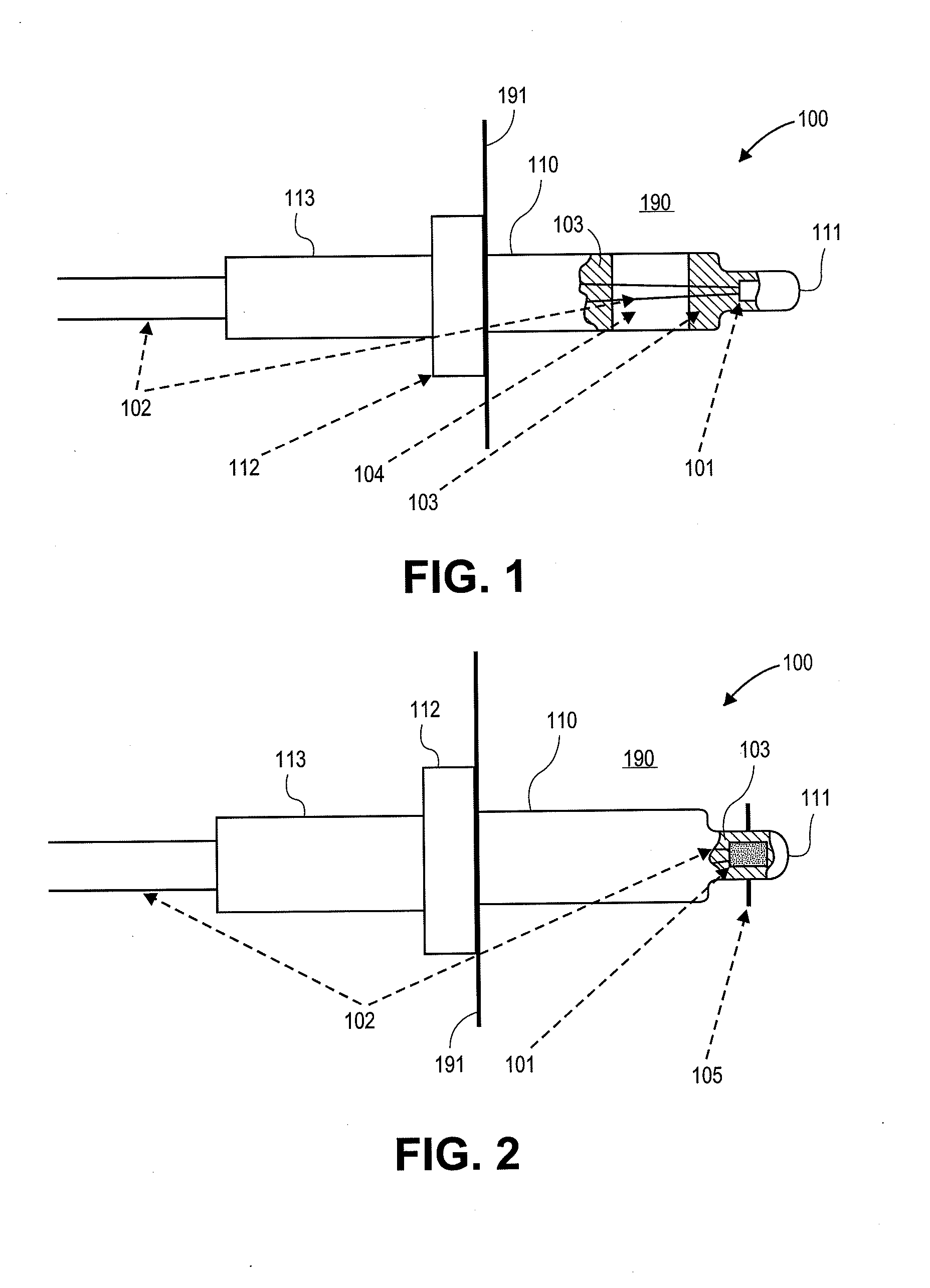Temperature sensor
a technology of temperature sensor and connecting wire, which is applied in the direction of liquid/fluent solid measurement, volume/mass flow by thermal effect, instruments, etc., can solve the problem that the conventional compacted powder filler material does not provide sufficient support for the connecting wire, and achieves faster response, increased heat flow, and higher measurement accuracy
- Summary
- Abstract
- Description
- Claims
- Application Information
AI Technical Summary
Benefits of technology
Problems solved by technology
Method used
Image
Examples
Embodiment Construction
[0021]Referring now to FIG. 1, a temperature sensor 100 projects into an exhaust pipe 190 of a vehicle through a specially provided hole (not shown) in pipe wall 191. The wall 191 divides a hot zone within the pipe 190 from a cold zone exterior to the pipe 190.
[0022]The sensor 100 includes a temperature dependent resistor 101 mounted within a protective housing 110. The housing 110 is formed from materials such as stainless steel, nickel base alloys or similar materials. The resistor 101 is connected to external circuitry via a pair of connecting wires 102. In use, variations in temperature of the exhaust gas cause a variation in the temperature experienced by the resistor 101. Consequently, the resistance of the resistor 101 also varies. The resistance variation can be monitored by external circuitry via the wires 102 so as to provide an indication of the exhaust gas temperature.
[0023]The resistor 101 is mounted in a projecting end portion 111 of the housing which is of narrower cr...
PUM
 Login to View More
Login to View More Abstract
Description
Claims
Application Information
 Login to View More
Login to View More - R&D
- Intellectual Property
- Life Sciences
- Materials
- Tech Scout
- Unparalleled Data Quality
- Higher Quality Content
- 60% Fewer Hallucinations
Browse by: Latest US Patents, China's latest patents, Technical Efficacy Thesaurus, Application Domain, Technology Topic, Popular Technical Reports.
© 2025 PatSnap. All rights reserved.Legal|Privacy policy|Modern Slavery Act Transparency Statement|Sitemap|About US| Contact US: help@patsnap.com


